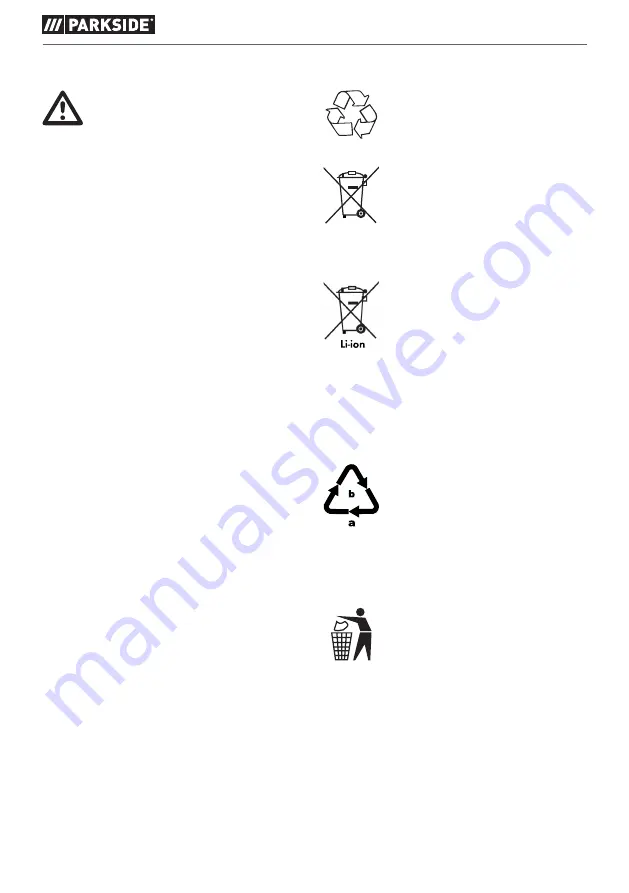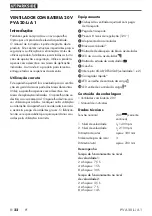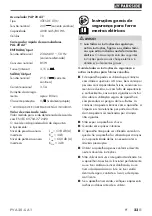
PVA 20-Li A1
■
36
│
GB
│
MT
Cleaning and maintenance
WARNING! RISK OF INJURY! Always
switch the appliance off and remove
the battery before carrying out any
work on the appliance.
■
Never allow liquids to get into the appliance .
■
Use a damp cloth to clean the housing . Never
use petrol, solvents or cleansers which can
damage plastic .
■
If a lithium-ion battery is going to be stored for
an extended period, the charge level should be
checked regularly . The optimum charge level is
between 50% and 80% . The optimum storage
environment is cool and dry .
Disposal
The packaging is made from environ-
mentally friendly material and can be
disposed of at your local recycling
plant .
Do not dispose of power tools
in the normal domestic waste!
According to European Directive
2012/19/EU, used power tools must
be collected separately and recycled in an environ-
mentally sound manner .
Do not dispose of batteries in
your normal household waste!
Defective or worn-out rechargeable
batteries must be recycled according
to Directive 2006/66/EC . Take the
battery pack and/or the appliance to a nearby
collection facility .
Please contact your local authority or town council
for information about disposal options for used
power tools/battery packs .
Dispose of the packaging in an envi-
ronmentally friendly manner . Observe
the labels on the different packaging
materials and separate them as
needed . The packaging materials are labelled with
abbreviations (a) and numbers (b) with the
following meanings: 1–7: plastics, 20–22: paper
and cardboard, 80–98: composites .
Your local community or municipal
authorities can provide information
on how to dispose of the worn-out
product .
Summary of Contents for PVA 20-Li A1
Page 3: ...A...
















































